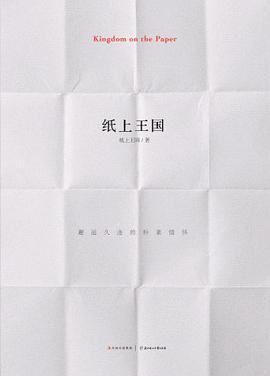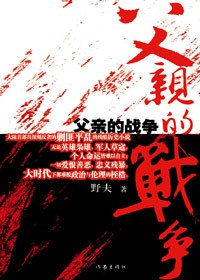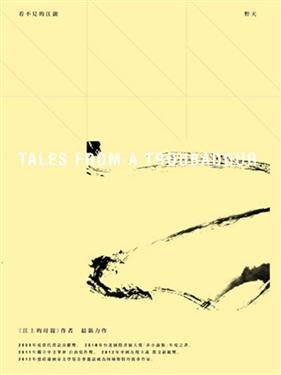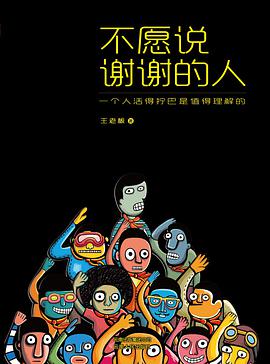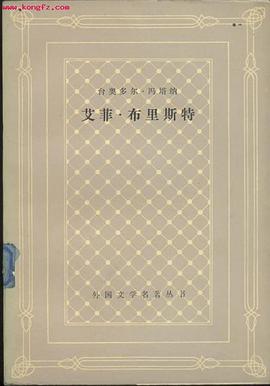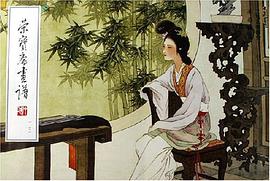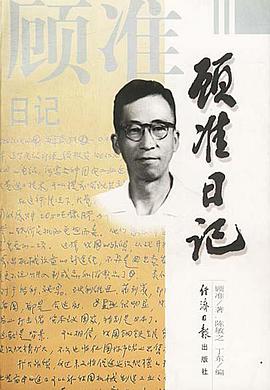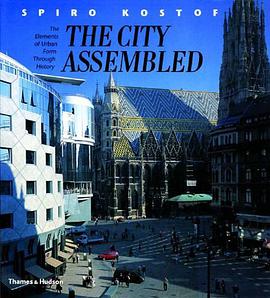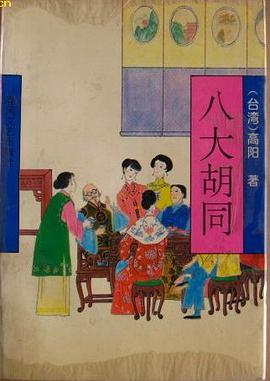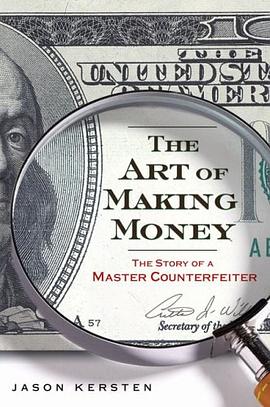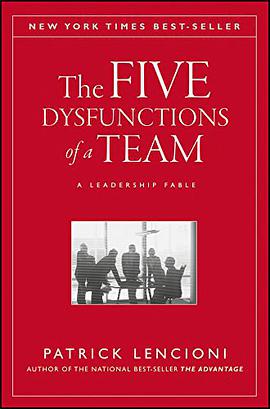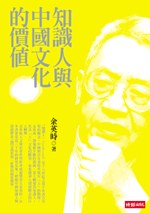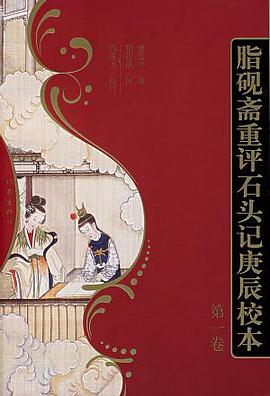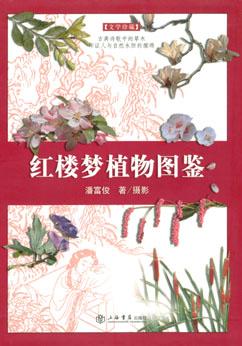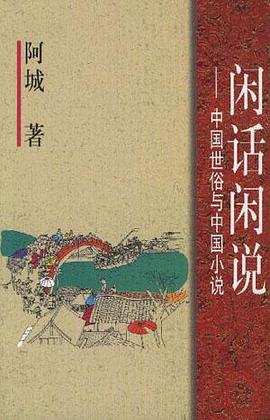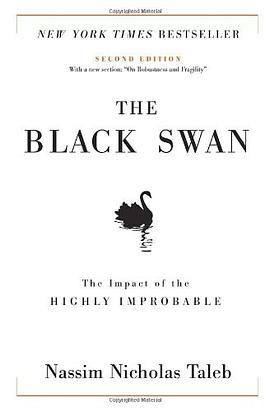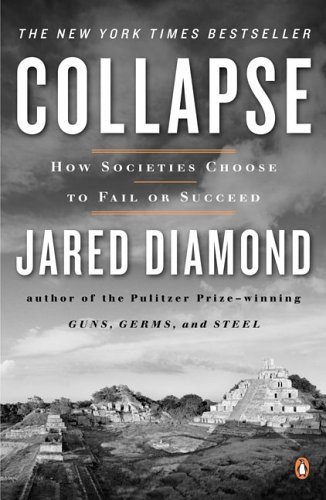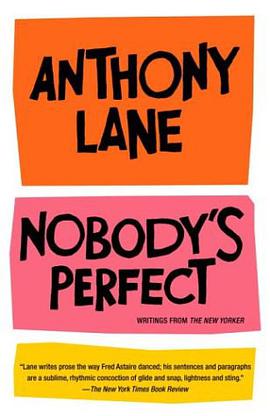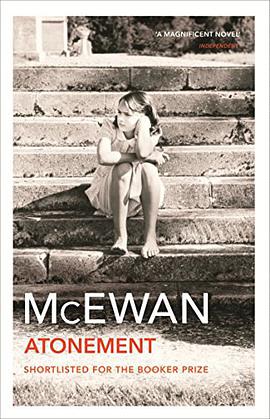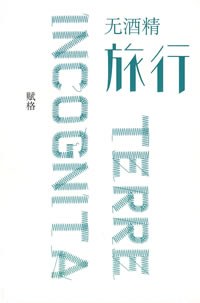jean@douban&Twitter - 标记
父亲的战争 豆瓣
作者:
野夫
作家出版社
2009
- 9
20世纪50年代初的清匪反霸,并不算是一场战争,它只是中共天下底定后的无数零星战斗,是为巩固基层政权重建社会秩序而必须进行的一次大扫除运动。但对于许多参与者来说,却是他们一生的战争。他们在这场战斗中搏取功名,身经死亡,感受仇恨、友谊和爱,并结下了影响平生的各种因素——这其中包含着非常酷美而哀伤的故事!
在旧中国,匪的存在是与王共生的——有官就有匪。匪是一种特殊的社会现象,它代表了一种江湖文化。匪的构成也十分复杂,并不简单的只是一群杀人越货的强盗;即使在20世纪50年代,它也不只是国民党的残兵败将。但对于任何一个大一统的国家来说,匪都是一种非法的存在,因此也必将要予以扫荡。无论剿无降诛,其中都演绎着无数可歌可泣的戏剧。
本书试图通过一群生动的人物,重塑在共和国诞生之初那场伟大的剿匪运动中的一代无名英雄,是他们在一次次的短兵相接和血肉相搏中,真正结束了中国几千年来匪的历史。同样,本书也将通过对不同匪类的刻画,重新诠释旧中国形成而遗留的各种人生悲剧。
同名电视剧由李雪健主演。
在旧中国,匪的存在是与王共生的——有官就有匪。匪是一种特殊的社会现象,它代表了一种江湖文化。匪的构成也十分复杂,并不简单的只是一群杀人越货的强盗;即使在20世纪50年代,它也不只是国民党的残兵败将。但对于任何一个大一统的国家来说,匪都是一种非法的存在,因此也必将要予以扫荡。无论剿无降诛,其中都演绎着无数可歌可泣的戏剧。
本书试图通过一群生动的人物,重塑在共和国诞生之初那场伟大的剿匪运动中的一代无名英雄,是他们在一次次的短兵相接和血肉相搏中,真正结束了中国几千年来匪的历史。同样,本书也将通过对不同匪类的刻画,重新诠释旧中国形成而遗留的各种人生悲剧。
同名电视剧由李雪健主演。
艾菲·布里斯特 豆瓣
Effi Briest
作者:
台奥多尔·冯塔纳
译者:
韩世钟
上海译文出版社
1980
《艾菲·布里斯特》是冯塔纳的代表作,写贵族小姐艾菲·布里斯特的婚姻悲剧。她母亲婚前曾和男爵殷士台顿相爱,艾菲长大后,母亲作主把她嫁给了他。殷士台顿在海滨小城凯辛当县长,只顾往上爬,不关心妻子。艾菲在年龄和感情上同丈夫有很大距离,感到生活空虚。不久,她认识了丈夫的朋友克拉姆巴斯少校,克拉姆巴斯是个玩弄女性的花花公子,他引诱了艾菲。后来殷士台顿调职柏林,艾菲就此摆脱了克拉姆巴斯。六年后,殷士台顿偶然发现克拉姆巴斯和艾菲过去的通信,知道了他们间的关系。他为了贵族的名誉,就和克拉姆巴斯决斗,把对方打死,又和艾菲离婚。最后艾菲病死在娘家。
作者通过艾菲在婚姻和爱情上的不幸遭遇,揭露批判了普鲁士贵族阶层道德习俗的虚伪和残酷。艾菲从小接受贵族教育,崇拜金钱名位,爱慕虚荣,对生活充满幻想。她顺从母亲的安排,同意嫁给年龄比她大一倍以上的殷士台顿,就因为他有名誉和地位。正是这种传统的道德观毁灭了她。同样,殷士台顿也是贵族道德观的俘虏,他发现妻子对他不忠以后,出于贵族名誉观念,和克拉姆巴斯决斗。正如他的朋友维勒斯多夫所说:“我们的名誉崇拜是一种偶像崇拜,只要这个偶像存在一天,我们就必须服从它。”作者虽然批判了贵族的虚假的荣誉心,但是仍站在人道主义立场上,对艾菲和殷士台顿寄予同情。小说紧紧抓住艾菲的婚姻这一主要情节逐步向前发展,结构紧凑,描写细致。全书采用大量对话,使人物形象更鲜明生动。
作者通过艾菲在婚姻和爱情上的不幸遭遇,揭露批判了普鲁士贵族阶层道德习俗的虚伪和残酷。艾菲从小接受贵族教育,崇拜金钱名位,爱慕虚荣,对生活充满幻想。她顺从母亲的安排,同意嫁给年龄比她大一倍以上的殷士台顿,就因为他有名誉和地位。正是这种传统的道德观毁灭了她。同样,殷士台顿也是贵族道德观的俘虏,他发现妻子对他不忠以后,出于贵族名誉观念,和克拉姆巴斯决斗。正如他的朋友维勒斯多夫所说:“我们的名誉崇拜是一种偶像崇拜,只要这个偶像存在一天,我们就必须服从它。”作者虽然批判了贵族的虚假的荣誉心,但是仍站在人道主义立场上,对艾菲和殷士台顿寄予同情。小说紧紧抓住艾菲的婚姻这一主要情节逐步向前发展,结构紧凑,描写细致。全书采用大量对话,使人物形象更鲜明生动。
荣宝斋画谱(123) 豆瓣
作者:
王叔晖 绘
2000
- 1
《荣宝斋画谱123》以学术性、普及性和高品位拉近了画家和美术爱好者的距离。专业画家都从出版的《画谱》中来了解名家作品的艺术特色,使其起到了相互交流、了解和学习的作用。《荣宝斋画谱(123)》为“荣宝斋画谱(123)”,书中收集了作者多年来不同时期的作品。荣宝斋出版社出版的《荣宝斋画谱》在海内外美术家和爱好者中博得了荣誉。
The City Assembled 豆瓣
作者:
Spiro Kostof
Thames & Hudson
2005
- 1
Spiro Kostof, the renowned architectural historian and chronicler of urban form, presents a universal history of the elements of cities: streets, public places, urban divisions, and the borders of city and countryside. This is both an independent study and a companion volume to Professor Kostof's book "The City Shaped" which dealt with cities as complete entities. Now he follows the evolution of their components, and traces the story right up to the present, showing how the issues remain fresh and engage with our own day, often in unexpected ways. He also discusses "urban process": the effect on cities of natural disasters (such as the Great Fire of London and the Lisbon earthquake), war and comprehensive redevelopment, compared with traditional patterns of incremental growth and change. This is at once an exercise in architectural and social history, a case-study for the present, and a pointer for the future.
The Art of Making Money 豆瓣
作者:
Jason Kersten
Gotham
2009
- 6
The true story of a brilliant counterfeiter who "made" millions, outwitted the Secret Service, and was finally undone when he went in search of the one thing his forged money couldn't buy him: family.
Art Williams spent his boyhood in a comfortable middle-class existence in 1970s Chicago, but his idyll was shattered when, in short order, his father abandoned the family, his bipolar mother lost her wits, and Williams found himself living in one of Chicago's worst housing projects. He took to crime almost immediately, starting with petty theft before graduating to robbing drug dealers. Eventually a man nicknamed "DaVinci" taught him the centuries-old art of counterfeiting. After a stint in jail, Williams emerged to discover that the Treasury Department had issued the most secure hundred-dollar bill ever created: the 1996 New Note. Williams spent months trying to defeat various security features before arriving at a bill so perfect that even law enforcement had difficulty distinguishing it from the real thing. Williams went on to print millions in counterfeit bills, selling them to criminal organizations and using them to fund cross-country spending sprees. Still unsatisfied, he went off in search of his long-lost father, setting in motion a chain of betrayals that would be his undoing.
In The Art of Making Money , journalist Jason Kersten details how Williams painstakingly defeated the anti-forging features of the New Note, how Williams and his partner-in-crime wife converted fake bills into legitimate tender at shopping malls all over America, and how they stayed one step ahead of the Secret Service until trusting the wrong person brought them all down. A compulsively readable story of how having it all is never enough, The Art of Making Money is a stirring portrait of the rise and inevitable fall of a modern-day criminal mastermind.
An Interview with Jason Kersten, author of THE ART OF MAKING MONEY
Q: What compelled you to write The Art of Making Money ?
A: Curiosity about the crime of counterfeiting initially drew me in. Master counterfeiters- criminals who produce superior quality notes and sell them-are extremely rare. Unlike other kinds of career criminals, they are also craftsmen, and they typically learn from another master through apprenticeship. When Art Williams learned to counterfeit from a master at just 16, he was the last link in a chain of counterfeiters that went back generations. I found this so fascinating, this idea of legacy. I wanted to know how Art learned the art of counterfeiting, the dynamics of that student- teacher relationship and how it changed him. Then of course there was his pursuit of a counterfeit of the 1996 New Note, the most secure US bill ever created. It was a quest, and quests always make for great stories.
While it was the world of counterfeiting that originally attracted me to Art's story, what ultimately made a book-length project worthwhile wasn't the crime, but the man. Art's quest to reconnect with his father was far more compelling than his criminal escapades, and it is the conflict that arises between these two goals that gives his story so much dramatic weight.
Q: How did you find Art Williams and his story?
A: Art Williams actually found me. Back in 2004, the Hollywood producer Paul Pompian spent a week in Chicago scouting locations for one of his films. Paul didn't have a car, so one of his friends loaned him a car and driver. That driver turned out to be Art Williams. As the week went by, Art kept hinting to Paul that if he really wanted to make an interesting movie, he should listen to his story. Of course, being a veteran Hollywood man, Paul hears such claims on a daily basis, so he pretty much blew Art off the entire week.
On his last day in Chicago, Paul had a few hours to kill before heading to the airport. By then he had taken a liking to Art. They were both native Chicagoans, both from the streets, and in a few of the details Art revealed about his past Paul saw shades of his own memories growing up in the city. Paul offered to buy Art lunch and, grudgingly, finally listen to his story. Upon hearing that Art had learned to counterfeit at 16, Paul was shocked, and of course there was much more to the story. He thought that Art's life might indeed not only make a good film, but an interesting book. Eventually he contacted my literary agent in the hopes of finding someone to write it.
I really didn't know what to think when my agent told me about Art. I was fascinated, but there was no way I could commit to anything without meeting Art myself. After spending an hour with him on the phone and doing a little research, I though it would at least make an interesting magazine article. The resulting article ran in Rolling Stone in July of 2005, and by then I had learned enough about Art's story to want to write the book.
Q: How much money did Art Williams counterfeit?
A: By Art's own estimate, he counterfeited about ten million dollars worth of US currency over a ten-year period. While that is quite a sum for a lone counterfeiter, the dynamics of the crime make getting rich from it a bit more complicated. Since he sold much of it for 30- cents on the dollar, he only got about third or less of the face value. Overhead, his splurging lifestyle, and the countless bills he burned because he wasn't quite satisfied, reduced his net profit even further.
Q: Have you ever seen one of Art Williams's counterfeit bills?
A: I have, though interestingly this didn't happen until the book was almost finished. The bill, a C- note, was stuffed inside a journal sent to me by someone close to Art. This individual had tucked it in there as a memento years earlier and completely forgotten about it. Seeing it was a strange sensation. If I hadn't spent so much time learning about both real and counterfeit currency, I wouldn't have been able to distinguish it from a genuine bill. Holding it in my hand, I realized how easy it would be to just go spend it. Art always told me that spending his bills never felt like a crime to him, and I could see why: it was too easy to believe the bill was real.
Q: While writing this book, did you have fantasies about becoming a counterfeiter yourself?
A: There came a point when I realized that few people-perhaps nobody other than Art and Natalie-knew as much as I did about how Williams made his bills. At the same time, I also had intimate knowledge of the personal tragedies and sufferings that his life as a counterfeiter had caused him. That kind of knowledge tends to strip away the glamour of the crime.
Even so, there have certainly been times when I've daydreamed about making my own bills. Those fantasies are very short-lived. The likelihood that I would wind up in prison aside, counterfeiting at Art's level requires tremendous skill and patience, and it helps if you enjoy the work, which comes down to printing. Art always said he did it more for the challenge than the money, and I believe him. Sadly, if Art applied the same discipline to his counterfeiting to a legitimate endeavor, he would not only be successful, but free.
Art Williams spent his boyhood in a comfortable middle-class existence in 1970s Chicago, but his idyll was shattered when, in short order, his father abandoned the family, his bipolar mother lost her wits, and Williams found himself living in one of Chicago's worst housing projects. He took to crime almost immediately, starting with petty theft before graduating to robbing drug dealers. Eventually a man nicknamed "DaVinci" taught him the centuries-old art of counterfeiting. After a stint in jail, Williams emerged to discover that the Treasury Department had issued the most secure hundred-dollar bill ever created: the 1996 New Note. Williams spent months trying to defeat various security features before arriving at a bill so perfect that even law enforcement had difficulty distinguishing it from the real thing. Williams went on to print millions in counterfeit bills, selling them to criminal organizations and using them to fund cross-country spending sprees. Still unsatisfied, he went off in search of his long-lost father, setting in motion a chain of betrayals that would be his undoing.
In The Art of Making Money , journalist Jason Kersten details how Williams painstakingly defeated the anti-forging features of the New Note, how Williams and his partner-in-crime wife converted fake bills into legitimate tender at shopping malls all over America, and how they stayed one step ahead of the Secret Service until trusting the wrong person brought them all down. A compulsively readable story of how having it all is never enough, The Art of Making Money is a stirring portrait of the rise and inevitable fall of a modern-day criminal mastermind.
An Interview with Jason Kersten, author of THE ART OF MAKING MONEY
Q: What compelled you to write The Art of Making Money ?
A: Curiosity about the crime of counterfeiting initially drew me in. Master counterfeiters- criminals who produce superior quality notes and sell them-are extremely rare. Unlike other kinds of career criminals, they are also craftsmen, and they typically learn from another master through apprenticeship. When Art Williams learned to counterfeit from a master at just 16, he was the last link in a chain of counterfeiters that went back generations. I found this so fascinating, this idea of legacy. I wanted to know how Art learned the art of counterfeiting, the dynamics of that student- teacher relationship and how it changed him. Then of course there was his pursuit of a counterfeit of the 1996 New Note, the most secure US bill ever created. It was a quest, and quests always make for great stories.
While it was the world of counterfeiting that originally attracted me to Art's story, what ultimately made a book-length project worthwhile wasn't the crime, but the man. Art's quest to reconnect with his father was far more compelling than his criminal escapades, and it is the conflict that arises between these two goals that gives his story so much dramatic weight.
Q: How did you find Art Williams and his story?
A: Art Williams actually found me. Back in 2004, the Hollywood producer Paul Pompian spent a week in Chicago scouting locations for one of his films. Paul didn't have a car, so one of his friends loaned him a car and driver. That driver turned out to be Art Williams. As the week went by, Art kept hinting to Paul that if he really wanted to make an interesting movie, he should listen to his story. Of course, being a veteran Hollywood man, Paul hears such claims on a daily basis, so he pretty much blew Art off the entire week.
On his last day in Chicago, Paul had a few hours to kill before heading to the airport. By then he had taken a liking to Art. They were both native Chicagoans, both from the streets, and in a few of the details Art revealed about his past Paul saw shades of his own memories growing up in the city. Paul offered to buy Art lunch and, grudgingly, finally listen to his story. Upon hearing that Art had learned to counterfeit at 16, Paul was shocked, and of course there was much more to the story. He thought that Art's life might indeed not only make a good film, but an interesting book. Eventually he contacted my literary agent in the hopes of finding someone to write it.
I really didn't know what to think when my agent told me about Art. I was fascinated, but there was no way I could commit to anything without meeting Art myself. After spending an hour with him on the phone and doing a little research, I though it would at least make an interesting magazine article. The resulting article ran in Rolling Stone in July of 2005, and by then I had learned enough about Art's story to want to write the book.
Q: How much money did Art Williams counterfeit?
A: By Art's own estimate, he counterfeited about ten million dollars worth of US currency over a ten-year period. While that is quite a sum for a lone counterfeiter, the dynamics of the crime make getting rich from it a bit more complicated. Since he sold much of it for 30- cents on the dollar, he only got about third or less of the face value. Overhead, his splurging lifestyle, and the countless bills he burned because he wasn't quite satisfied, reduced his net profit even further.
Q: Have you ever seen one of Art Williams's counterfeit bills?
A: I have, though interestingly this didn't happen until the book was almost finished. The bill, a C- note, was stuffed inside a journal sent to me by someone close to Art. This individual had tucked it in there as a memento years earlier and completely forgotten about it. Seeing it was a strange sensation. If I hadn't spent so much time learning about both real and counterfeit currency, I wouldn't have been able to distinguish it from a genuine bill. Holding it in my hand, I realized how easy it would be to just go spend it. Art always told me that spending his bills never felt like a crime to him, and I could see why: it was too easy to believe the bill was real.
Q: While writing this book, did you have fantasies about becoming a counterfeiter yourself?
A: There came a point when I realized that few people-perhaps nobody other than Art and Natalie-knew as much as I did about how Williams made his bills. At the same time, I also had intimate knowledge of the personal tragedies and sufferings that his life as a counterfeiter had caused him. That kind of knowledge tends to strip away the glamour of the crime.
Even so, there have certainly been times when I've daydreamed about making my own bills. Those fantasies are very short-lived. The likelihood that I would wind up in prison aside, counterfeiting at Art's level requires tremendous skill and patience, and it helps if you enjoy the work, which comes down to printing. Art always said he did it more for the challenge than the money, and I believe him. Sadly, if Art applied the same discipline to his counterfeiting to a legitimate endeavor, he would not only be successful, but free.
The Five Dysfunctions of a Team 豆瓣 Goodreads
作者:
Patrick Lencioni
Jossey-Bass
2002
- 4
在线阅读本书
In The Five Dysfunctions of a Team Patrick Lencioni once again offers a leadership fable that is as enthralling and instructive as his first two best–selling books, The Five Temptations of a CEO and The Four Obsessions of an Extraordinary Executive. This time, he turns his keen intellect and storytelling power to the fascinating, complex world of teams.
Kathryn Petersen, Decision Tech′s CEO, faces the ultimate leadership crisis: Uniting a team in such disarray that it threatens to bring down the entire company. Will she succeed? Will she be fired? Will the company fail? Lencioni′s utterly gripping tale serves as a timeless reminder that leadership requires as much courage as it does insight.
Throughout the story, Lencioni reveals the five dysfunctions which go to the very heart of why teams even the best ones–often struggle. He outlines a powerful model and actionable steps that can be used to overcome these common hurdles and build a cohesive, effective team. Just as with his other books, Lencioni has written a compelling fable with a powerful yet deceptively simple message for all those who strive to be exceptional team leaders.
In The Five Dysfunctions of a Team Patrick Lencioni once again offers a leadership fable that is as enthralling and instructive as his first two best–selling books, The Five Temptations of a CEO and The Four Obsessions of an Extraordinary Executive. This time, he turns his keen intellect and storytelling power to the fascinating, complex world of teams.
Kathryn Petersen, Decision Tech′s CEO, faces the ultimate leadership crisis: Uniting a team in such disarray that it threatens to bring down the entire company. Will she succeed? Will she be fired? Will the company fail? Lencioni′s utterly gripping tale serves as a timeless reminder that leadership requires as much courage as it does insight.
Throughout the story, Lencioni reveals the five dysfunctions which go to the very heart of why teams even the best ones–often struggle. He outlines a powerful model and actionable steps that can be used to overcome these common hurdles and build a cohesive, effective team. Just as with his other books, Lencioni has written a compelling fable with a powerful yet deceptively simple message for all those who strive to be exceptional team leaders.
知識人與中國文化的價值 豆瓣
作者:
余英時
時報文化
2007
「知識人」(intellectual)是十八世紀之後才在西方出現的概念,中國則自先秦時代便有「士」的階層,並形成一個延續不斷的傳統。從士轉變為知識人,代表「士」文化的斷裂,也象徵華人價值體系的巨大轉變。
克魯格人文與社會科學終身成就獎得主余英時,以本書薈萃近三十年的研究見地,耙梳中國知識人與價值體系之間交相形塑、影響的綿密關係。* * *
本書收錄余英時在一九八○年代之後研究的菁華,論述知識人在中國的歷史淵源、意義等面向,及其流變對價值意識的影響。但本書意旨並不侷限在「過去」與「中國」;作者觀照中、西知識人在追尋真理上的差異,探討中國文化價值體系為何有其獨特性(中國知識人求「內向超越」,西方則是「外在超越」)。在西方人文研究重新檢視「現代以後」(post-modern)價值轉向的今日,本書對於瞭解華人安身立命的價值觀亦有偌大助益。
書中旁徵博引,釐清許多過去讀者可能不甚了了的見解。拿科舉制度來說,漢朝的按地區人口多寡設定各郡縣舉薦名額,因而有幾分「代議制度」的味道;宋人歐陽修、司馬光在「選賢唯才」(近似「全國聯招」)或是「逐路取人」(各地方有基本名額的保障)上,立場相左,是因為出身地域不同(歐陽為文化薈萃、中舉人數較多的江南,司馬則為風華不再的江北)。而漢朝董仲舒建請武帝「罷黜百家」,其實儒家也在罷黜之列,因為他要獨尊的是諸子百家均奉為聖典的「五經」(詩、書、禮、易、春秋),而非以「五經」為不二規臬的「儒術」。(見第八篇,〈試說科舉在中國史上的功能與意義〉)
又如,共產黨深知「士可殺,不可辱」的價值觀深植於讀書人心中,因此文革期間對於文人「只辱不殺」,目的就是要讓他們生不如死(而且自殺會禍延家人,行不得)。而幾十年來極力摧毀傳統知識人價值體系的後果,就是今日中國大陸學術剽竊、「黑心」商業屢見不鮮,被舉發時只嘆運氣好而不覺羞愧。(參見第五篇,〈價值荒原上的儒家幽靈〉)
作者更精闢指出,價值意識一方面淵源於傳統,一方面植根於生活的實踐,不是少數人可以憑空創造而強加於整個社會的。只要社會本身有其相對的獨立性--相對於國家(state)的權力而言,價值觀念的變遷也自然會找到自己的軌跡。此一見解,著實為百年未定的中西文化論辯闢出一條中道。* * *
〔編輯說明〕
余英時先生的大作《從價值系統看中國文化的現代意義》(1984年),將中國文化的現代意義予以精微的闡發和透澈的疏通,超然於全面西化和極端保守的傳統爭執之外,既不左偏右袒,也不作調人,而是提出具體、平正而圓融的看法。有識之士咸認,這篇文章即使不是百年來中西文化論辯最後的斷案,至少也是五四以降所有討論文字中見解最圓熟、立論最透闢的一篇。在台灣歷經二十餘年的淘洗,始終歷久而彌新。
時報文化出版公司本計畫推出《從》書的第三版,因而請作者評估是否增補文字。但作者重新思考該書的主旨,繼而就其經營數十年的研究領域——中國的「士」文化,選出另外十篇文字,將「知識人」與「文化價值」列於同等重要的位置。原因何在?因為就中國傳統而言,價值系統的整理、提煉、闡明等任務,一直是由「士」來擔任。這一增補,全書篇幅增加三倍,成就了一本新作,便是《知識人與中國文化的價值》。
克魯格人文與社會科學終身成就獎得主余英時,以本書薈萃近三十年的研究見地,耙梳中國知識人與價值體系之間交相形塑、影響的綿密關係。* * *
本書收錄余英時在一九八○年代之後研究的菁華,論述知識人在中國的歷史淵源、意義等面向,及其流變對價值意識的影響。但本書意旨並不侷限在「過去」與「中國」;作者觀照中、西知識人在追尋真理上的差異,探討中國文化價值體系為何有其獨特性(中國知識人求「內向超越」,西方則是「外在超越」)。在西方人文研究重新檢視「現代以後」(post-modern)價值轉向的今日,本書對於瞭解華人安身立命的價值觀亦有偌大助益。
書中旁徵博引,釐清許多過去讀者可能不甚了了的見解。拿科舉制度來說,漢朝的按地區人口多寡設定各郡縣舉薦名額,因而有幾分「代議制度」的味道;宋人歐陽修、司馬光在「選賢唯才」(近似「全國聯招」)或是「逐路取人」(各地方有基本名額的保障)上,立場相左,是因為出身地域不同(歐陽為文化薈萃、中舉人數較多的江南,司馬則為風華不再的江北)。而漢朝董仲舒建請武帝「罷黜百家」,其實儒家也在罷黜之列,因為他要獨尊的是諸子百家均奉為聖典的「五經」(詩、書、禮、易、春秋),而非以「五經」為不二規臬的「儒術」。(見第八篇,〈試說科舉在中國史上的功能與意義〉)
又如,共產黨深知「士可殺,不可辱」的價值觀深植於讀書人心中,因此文革期間對於文人「只辱不殺」,目的就是要讓他們生不如死(而且自殺會禍延家人,行不得)。而幾十年來極力摧毀傳統知識人價值體系的後果,就是今日中國大陸學術剽竊、「黑心」商業屢見不鮮,被舉發時只嘆運氣好而不覺羞愧。(參見第五篇,〈價值荒原上的儒家幽靈〉)
作者更精闢指出,價值意識一方面淵源於傳統,一方面植根於生活的實踐,不是少數人可以憑空創造而強加於整個社會的。只要社會本身有其相對的獨立性--相對於國家(state)的權力而言,價值觀念的變遷也自然會找到自己的軌跡。此一見解,著實為百年未定的中西文化論辯闢出一條中道。* * *
〔編輯說明〕
余英時先生的大作《從價值系統看中國文化的現代意義》(1984年),將中國文化的現代意義予以精微的闡發和透澈的疏通,超然於全面西化和極端保守的傳統爭執之外,既不左偏右袒,也不作調人,而是提出具體、平正而圓融的看法。有識之士咸認,這篇文章即使不是百年來中西文化論辯最後的斷案,至少也是五四以降所有討論文字中見解最圓熟、立論最透闢的一篇。在台灣歷經二十餘年的淘洗,始終歷久而彌新。
時報文化出版公司本計畫推出《從》書的第三版,因而請作者評估是否增補文字。但作者重新思考該書的主旨,繼而就其經營數十年的研究領域——中國的「士」文化,選出另外十篇文字,將「知識人」與「文化價值」列於同等重要的位置。原因何在?因為就中國傳統而言,價值系統的整理、提煉、闡明等任務,一直是由「士」來擔任。這一增補,全書篇幅增加三倍,成就了一本新作,便是《知識人與中國文化的價值》。
脂砚斋重评石头记庚辰校本 豆瓣
9.8 (16 个评分)
作者:
曹雪芹 著 脂砚斋 评
/
邓遂夫 校订
译者:
邓遂夫 校订
作家出版社
2006
- 5
满纸荒唐言,一把辛酸泪!都云作者痴,谁解其中味?
一部妇孺皆知的《红楼梦》可谓凝聚了曹雪芹一生的心血。小说以贾宝玉、林黛玉的爱情悲剧为主线,驾构出了贾、王、史、薛四大家族的兴衰史。鲜活的人物、凄美的爱情,是一部读不完、说不尽的千古奇书。本书所据底本,是现存十一种《红楼梦》古抄本中最完整、最真切地保存了曹雪芹生前定本原貌的一种,不仅可以从中领略作者原定本的真实风貌,还可以直接品味到作者的“红颜知己”脂砚斋在庚辰原本上留下的2100余条珍贵批语,具有独特的艺术欣赏价值、学术研究价值和版本珍藏价值。
本书校订者:邓遂夫
本书是迄今国内外首次出版的一部全面反映《红楼梦》庚辰本(包括其脂批)原貌的校订本。
本书所据底本,是现存十一种《红楼梦》古抄本中最完整、最真切地保存了曹雪芹生前定本原貌的一种,由徐星署先生1932年在北京隆福寺发现收藏,后遗赠燕京大学图书馆,今藏北京大学图书馆。此本与胡适先生1927年发现收藏的甲戌本(残本)堪称双璧,属国宝级文物与文献。今据文学古籍刊行1955年及人民文学出版社1965、1993年出版的三种影印本校点排印(并据原件作了重点核对),同时还收录了底本原件及影印本上的相关资料。
本书与过去出版的《红楼梦》通行印本最大的不同之处,是严格按照曹雪芹生前最后定本的原貌校订排印。不仅可以从中领略作者原定本的真实风貌,还可以直接品味到作者的“红颜知己”脂砚斋在庚辰原本上留下的2100余条珍贵批语(其中大部分和此前本社出版的甲戌校本的批语不同),具有独特的艺术欣赏价值、学术研究价值和版本珍藏价值。
本书的校订,在《红楼梦》文本(包括脂批)的正本清源上有重大突破,值得引起各界人士关注。
一部妇孺皆知的《红楼梦》可谓凝聚了曹雪芹一生的心血。小说以贾宝玉、林黛玉的爱情悲剧为主线,驾构出了贾、王、史、薛四大家族的兴衰史。鲜活的人物、凄美的爱情,是一部读不完、说不尽的千古奇书。本书所据底本,是现存十一种《红楼梦》古抄本中最完整、最真切地保存了曹雪芹生前定本原貌的一种,不仅可以从中领略作者原定本的真实风貌,还可以直接品味到作者的“红颜知己”脂砚斋在庚辰原本上留下的2100余条珍贵批语,具有独特的艺术欣赏价值、学术研究价值和版本珍藏价值。
本书校订者:邓遂夫
本书是迄今国内外首次出版的一部全面反映《红楼梦》庚辰本(包括其脂批)原貌的校订本。
本书所据底本,是现存十一种《红楼梦》古抄本中最完整、最真切地保存了曹雪芹生前定本原貌的一种,由徐星署先生1932年在北京隆福寺发现收藏,后遗赠燕京大学图书馆,今藏北京大学图书馆。此本与胡适先生1927年发现收藏的甲戌本(残本)堪称双璧,属国宝级文物与文献。今据文学古籍刊行1955年及人民文学出版社1965、1993年出版的三种影印本校点排印(并据原件作了重点核对),同时还收录了底本原件及影印本上的相关资料。
本书与过去出版的《红楼梦》通行印本最大的不同之处,是严格按照曹雪芹生前最后定本的原貌校订排印。不仅可以从中领略作者原定本的真实风貌,还可以直接品味到作者的“红颜知己”脂砚斋在庚辰原本上留下的2100余条珍贵批语(其中大部分和此前本社出版的甲戌校本的批语不同),具有独特的艺术欣赏价值、学术研究价值和版本珍藏价值。
本书的校订,在《红楼梦》文本(包括脂批)的正本清源上有重大突破,值得引起各界人士关注。
红楼梦植物图鉴 豆瓣
作者:
潘富俊
上海书店出版社
2005
- 9
《红楼梦》里繁盛的花草世界,不仅是场景的点缀,黛玉的潇湘馆、宝钗的蘅芜院,衬托了人物的性情;海棠诗社的由来,因海棠花而起;芒种节祭花神,黛玉有《葬花神》;中秋题咏菊花诗,一共吟咏菊花韵事十二种;香菱与芳官等人斗草,一连数出观音柳、罗汉松、君子竹、美人蕉等花草名……这些植物的名称与特性,透过文字的想象,仅能领略一二,有了此书,让读者一边欣赏文学,一边吸收植物学知识,岂不妙哉!
《红楼梦》作为古今第一奇书,已成为几乎每个中文读者的必读之书。然此素易读难解,于是研究《红楼梦》也成为古今学者前仆后继的使命。本书作者结合植物学专业人员与古典文学迷两种身份,尝试以多识草木之名来作为理解《红楼梦》的捷径。本书收录了所有在红楼梦中出现过的植物共242种,从每回故事大纲说起,言简意赅剖析每种植物在故事中的运用技巧。800多帧精彩摄影具体体现丰富多变、赏心悦目的红楼世界。借由本书,读者可了解曹雪芹如何运用植物来写景抒情、刻划人物,只有认识书中的植物特性,才能一一体会曹雪芹的匠心,了解红楼梦奥妙的隐喻与深远的寓意。本书系“文学珍藏”系列继《诗经植物图鉴》、《楚辞植物图鉴》和《唐诗植物图鉴》又推出的一本创意新书。
《红楼梦》作为古今第一奇书,已成为几乎每个中文读者的必读之书。然此素易读难解,于是研究《红楼梦》也成为古今学者前仆后继的使命。本书作者结合植物学专业人员与古典文学迷两种身份,尝试以多识草木之名来作为理解《红楼梦》的捷径。本书收录了所有在红楼梦中出现过的植物共242种,从每回故事大纲说起,言简意赅剖析每种植物在故事中的运用技巧。800多帧精彩摄影具体体现丰富多变、赏心悦目的红楼世界。借由本书,读者可了解曹雪芹如何运用植物来写景抒情、刻划人物,只有认识书中的植物特性,才能一一体会曹雪芹的匠心,了解红楼梦奥妙的隐喻与深远的寓意。本书系“文学珍藏”系列继《诗经植物图鉴》、《楚辞植物图鉴》和《唐诗植物图鉴》又推出的一本创意新书。
闲话闲说 豆瓣
9.2 (28 个评分)
作者:
阿城
作家出版社
1998
《闲话闲说:中国世俗与中国小说》以一个超现实的新中国为号召,当然凡有志和有热情的中国人皆会趋之,理所当然,厚非者是事后诸葛亮,人人可做的。这个超现实,也是一种现代的意思,中国的头脑们从晚清开始的一门心思,就是为迅速变中国为一个现代国家着急。凡事标明“现代”的一切观念,都像车票,要搭“现代”这趟车,不买票是不能上的。“无为而无不为”我看是道家的精髓,“无为”是讲在规律面前,只能无为,热铁别摸;可知道了规律,就能无不为,佚可以用铲子,用夹子,总之你可以动热铁了,“无不为”。后来的读书人专讲“无为”,是为了解决自己的困境,只是越讲越酸。
我个人是喜欢孔子的,起码喜欢他是个体力极好的人,我们现在开汽车,等于是在高速公路上坐沙发,超过两个小时都有点累,孔子当年是乘牛车握轼木周游列国,我是不敢和他握手的,会被捏痛。“一人得道,鸡犬升天”,都成仙了,仍要携带世俗,就好像我们看中国人搬进新楼,阳台上满是旧居的实用破烂。不识字的中国老百姓也晓得“敬惜字纸”,以前有字的纸是要集中在一起烧掉的,类似一种仪式,字,是有神性的。记得听张光直先生说中国文字的发生是为通人神,是纵向的,西方文字是为传播,是横向的。我想中国诗发生成熟得那么早,而且诗的地位高,与中国字的通神作用有关吧。这样地对待文字,文字焉敢随便变化?白西易讲究自己的诗通俗易懂,传说他做了诗要去念给不识字的妇女小孩听,这简直就把通俗做了检验一切的标准了。做诗自己做朋友看就是了,为什么会引起生存竞争?
看来唐朝的诗多商业行为的成分,不过商品质量非常高,伪劣品站不住脚。中文里的颓废,是先要有物质、文化的底子的,在这底子上沉溺,养成敏感乃至大废不起,精致到欲语无言,赏心悦目把玩终日却涕泗忽至,《红楼梦》的颓废就是由此发展起来的,后是“落了个白白茫茫大地真干净”,可见原来并非是白茫茫大地。
我个人是喜欢孔子的,起码喜欢他是个体力极好的人,我们现在开汽车,等于是在高速公路上坐沙发,超过两个小时都有点累,孔子当年是乘牛车握轼木周游列国,我是不敢和他握手的,会被捏痛。“一人得道,鸡犬升天”,都成仙了,仍要携带世俗,就好像我们看中国人搬进新楼,阳台上满是旧居的实用破烂。不识字的中国老百姓也晓得“敬惜字纸”,以前有字的纸是要集中在一起烧掉的,类似一种仪式,字,是有神性的。记得听张光直先生说中国文字的发生是为通人神,是纵向的,西方文字是为传播,是横向的。我想中国诗发生成熟得那么早,而且诗的地位高,与中国字的通神作用有关吧。这样地对待文字,文字焉敢随便变化?白西易讲究自己的诗通俗易懂,传说他做了诗要去念给不识字的妇女小孩听,这简直就把通俗做了检验一切的标准了。做诗自己做朋友看就是了,为什么会引起生存竞争?
看来唐朝的诗多商业行为的成分,不过商品质量非常高,伪劣品站不住脚。中文里的颓废,是先要有物质、文化的底子的,在这底子上沉溺,养成敏感乃至大废不起,精致到欲语无言,赏心悦目把玩终日却涕泗忽至,《红楼梦》的颓废就是由此发展起来的,后是“落了个白白茫茫大地真干净”,可见原来并非是白茫茫大地。
The Black Swan 豆瓣
作者:
[美] 纳西姆•尼古拉斯•塔勒布
Random House
2007
- 4
A black swan is a highly improbable event with three principal characteristics: It is unpredictable; it carries a massive impact; and, after the fact, we concoct an explanation that makes it appear less random, and more predictable, than it was.
The astonishing success of Google was a black swan; so was 9/11. For Nassim Nicholas Taleb, black swans underlie almost everything about our world, from the rise of religions to events in our own personal lives.
Why do we not acknowledge the phenomenon of black swans until after they occur? Part of the answer, according to Taleb, is that humans are hardwired to learn specifics when they should be focused on generalities.
We concentrate on things we already know and time and time again fail to take into consideration what we don’t know. We are, therefore, unable to truly estimate opportunities, too vulnerable to the impulse to simplify, narrate, and categorize, and not open enough to rewarding those who can imagine the “impossible.”
For years, Taleb has studied how we fool ourselves into thinking we know more than we actually do. We restrict our thinking to the irrelevant and inconsequential, while large events continue to surprise us and shape our world. Now, in this revelatory book, Taleb explains everything we know about what we don’t know. He offers surprisingly simple tricks for dealing with black swans and benefiting from them.
Elegant, startling, and universal in its applications The Black Swan will change the way you look at the world. Taleb is a vastly entertaining writer, with wit, irreverence, and unusual stories to tell. He has a polymathic command of subjects ranging from cognitive science to business to probability theory.
The Black Swan is a landmark book – itself a black swan.
The book also contains a 4-page glossary; 19 pages of notes; and, a 28-page bibliography in addition to an index.
The astonishing success of Google was a black swan; so was 9/11. For Nassim Nicholas Taleb, black swans underlie almost everything about our world, from the rise of religions to events in our own personal lives.
Why do we not acknowledge the phenomenon of black swans until after they occur? Part of the answer, according to Taleb, is that humans are hardwired to learn specifics when they should be focused on generalities.
We concentrate on things we already know and time and time again fail to take into consideration what we don’t know. We are, therefore, unable to truly estimate opportunities, too vulnerable to the impulse to simplify, narrate, and categorize, and not open enough to rewarding those who can imagine the “impossible.”
For years, Taleb has studied how we fool ourselves into thinking we know more than we actually do. We restrict our thinking to the irrelevant and inconsequential, while large events continue to surprise us and shape our world. Now, in this revelatory book, Taleb explains everything we know about what we don’t know. He offers surprisingly simple tricks for dealing with black swans and benefiting from them.
Elegant, startling, and universal in its applications The Black Swan will change the way you look at the world. Taleb is a vastly entertaining writer, with wit, irreverence, and unusual stories to tell. He has a polymathic command of subjects ranging from cognitive science to business to probability theory.
The Black Swan is a landmark book – itself a black swan.
The book also contains a 4-page glossary; 19 pages of notes; and, a 28-page bibliography in addition to an index.
Collapse 豆瓣 Goodreads
作者:
Jared Diamond
Penguin Books
2005
Book Description
In this fascinating book, Diamond seeks to understand the fates of past societies that collapsed for ecological reasons, combining the most important policy debate of this generation with the romance and mystery of lost worlds.
Amazon.com
Jared Diamond's Collapse: How Societies Choose to Fail or Succeed is the glass-half-empty follow-up to his Pulitzer Prize-winning Guns, Germs, and Steel. While Guns, Germs, and Steel explained the geographic and environmental reasons why some human populations have flourished, Collapse uses the same factors to examine why ancient societies, including the Anasazi of the American Southwest and the Viking colonies of Greenland, as well as modern ones such as Rwanda, have fallen apart. Not every collapse has an environmental origin, but an eco-meltdown is often the main catalyst, he argues, particularly when combined with society's response to (or disregard for) the coming disaster. Still, right from the outset of Collapse, the author makes clear that this is not a mere environmentalist's diatribe. He begins by setting the book's main question in the small communities of present-day Montana as they face a decline in living standards and a depletion of natural resources. Once-vital mines now leak toxins into the soil, while prion diseases infect some deer and elk and older hydroelectric dams have become decrepit. On all these issues, and particularly with the hot-button topic of logging and wildfires, Diamond writes with equanimity.
Because he's addressing such significant issues within a vast span of time, Diamond can occasionally speak too briefly and assume too much, and at times his shorthand remarks may cause careful readers to raise an eyebrow. But in general, Diamond provides fine and well-reasoned historical examples, making the case that many times, economic and environmental concerns are one and the same. With Collapse, Diamond hopes to jog our collective memory to keep us from falling for false analogies or forgetting prior experiences, and thereby save us from potential devastations to come. While it might seem a stretch to use medieval Greenland and the Maya to convince a skeptic about the seriousness of global warming, it's exactly this type of cross-referencing that makes Collapse so compelling.
--Jennifer Buckendorff
From Publishers Weekly
In his Pulitzer Prize–winning bestseller Guns, Germs, and Steel, geographer Diamond laid out a grand view of the organic roots of human civilizations in flora, fauna, climate and geology. That vision takes on apocalyptic overtones in this fascinating comparative study of societies that have, sometimes fatally, undermined their own ecological foundations. Diamond examines storied examples of human economic and social collapse, and even extinction, including Easter Island, classical Mayan civilization and the Greenland Norse. He explores patterns of population growth, overfarming, overgrazing and overhunting, often abetted by drought, cold, rigid social mores and warfare, that lead inexorably to vicious circles of deforestation, erosion and starvation prompted by the disappearance of plant and animal food sources. Extending his treatment to contemporary environmental trouble spots, from Montana to China to Australia, he finds today's global, technologically advanced civilization very far from solving the problems that plagued primitive, isolated communities in the remote past. At times Diamond comes close to a counsel of despair when contemplating the environmental havoc engulfing our rapidly industrializing planet, but he holds out hope at examples of sustainability from highland New Guinea's age-old but highly diverse and efficient agriculture to Japan's rigorous program of forest protection and, less convincingly, in recent green consumerism initiatives. Diamond is a brilliant expositor of everything from anthropology to zoology, providing a lucid background of scientific lore to support a stimulating, incisive historical account of these many declines and falls. Readers will find his book an enthralling, and disturbing, reminder of the indissoluble links that bind humans to nature. Photos.
From Booklist
Defining collapse as "extreme decline," the Pulitzer Prize-winning author of Guns, Germs, and Steel (1997), which posed questions about Western civilization's domination of much of the world, now examines the reverse side of that coin. Diamond ponders reasons why certain civilizations have collapsed. With an eye on the implications for the present and future, he bases his analysis on his newly phrased version of an old maxim about what history teaches: "The past offers us a rich database from which we can learn." Drawing examples from this database, from Polynesian culture on Easter Island to the Viking outposts in Greenland to the Mayan civilization in Central America, the author finds "the fundamental pattern of catastrophe" that is apparent in these populations that once flourished and then collapsed. The template he holds up is a construct based on five factors, including environmental damage, climate change, and hostile neighbors. In addition, Diamond casts his critical but acute and inclusive gaze on the issue of why civilizations fail to see collapse coming. A thought-provoking book containing not a single page of dense prose. Expect demand from civic- and history-minded readers.
Brad Hooper
From School Library Journal
Adult/High School–This powerful call to action should be read by all high school students. Diamond eloquently and persuasively describes the environmental and social problems that led to the collapse of previous civilizations and threaten us today. The book's organization makes researching particular regions or types of damage accessible. Unfamiliar words are defined, and mention of a place or issue that has been described in greater detail elsewhere includes relevant page numbers. Students may become impatient with the folksy Montana fishing stories in part one, but once the fascinating account of the vanished civilizations begins, readers are taken on an extraordinary journey. Using the Mayan empire, Easter Island, the Anasazi, and other examples, the author shows how a combination of environmental factors such as habitat destruction, the loss of biodiversity, and degradation of the soil caused complex, flourishing societies to suddenly disintegrate. Modern societies are divided into those that have begun to collapse, such as Rwanda and Haiti; those whose conservation policies have helped to avert disaster, such as Iceland and Japan; and those currently dealing with massive problems, such as Australia and China. Diamond is a cautious optimist. Some of his most compelling stories show how two groups of people sharing the same land, such as the Norse and Inuit in Greenland, can end up in completely different situations depending on how they address their problems. The solutions discussed are of vital importance: how societies respond to environmental degradation will determine how teens will live their adult lives. As Diamond points out, in a collapsing civilization, being rich just means being the last to starve. Black-and-white photos are included.
–Kathy Tewell, Fairfax County Public Library, VA
Book Dimension
length: (cm)21.7 width:(cm)14
In this fascinating book, Diamond seeks to understand the fates of past societies that collapsed for ecological reasons, combining the most important policy debate of this generation with the romance and mystery of lost worlds.
Amazon.com
Jared Diamond's Collapse: How Societies Choose to Fail or Succeed is the glass-half-empty follow-up to his Pulitzer Prize-winning Guns, Germs, and Steel. While Guns, Germs, and Steel explained the geographic and environmental reasons why some human populations have flourished, Collapse uses the same factors to examine why ancient societies, including the Anasazi of the American Southwest and the Viking colonies of Greenland, as well as modern ones such as Rwanda, have fallen apart. Not every collapse has an environmental origin, but an eco-meltdown is often the main catalyst, he argues, particularly when combined with society's response to (or disregard for) the coming disaster. Still, right from the outset of Collapse, the author makes clear that this is not a mere environmentalist's diatribe. He begins by setting the book's main question in the small communities of present-day Montana as they face a decline in living standards and a depletion of natural resources. Once-vital mines now leak toxins into the soil, while prion diseases infect some deer and elk and older hydroelectric dams have become decrepit. On all these issues, and particularly with the hot-button topic of logging and wildfires, Diamond writes with equanimity.
Because he's addressing such significant issues within a vast span of time, Diamond can occasionally speak too briefly and assume too much, and at times his shorthand remarks may cause careful readers to raise an eyebrow. But in general, Diamond provides fine and well-reasoned historical examples, making the case that many times, economic and environmental concerns are one and the same. With Collapse, Diamond hopes to jog our collective memory to keep us from falling for false analogies or forgetting prior experiences, and thereby save us from potential devastations to come. While it might seem a stretch to use medieval Greenland and the Maya to convince a skeptic about the seriousness of global warming, it's exactly this type of cross-referencing that makes Collapse so compelling.
--Jennifer Buckendorff
From Publishers Weekly
In his Pulitzer Prize–winning bestseller Guns, Germs, and Steel, geographer Diamond laid out a grand view of the organic roots of human civilizations in flora, fauna, climate and geology. That vision takes on apocalyptic overtones in this fascinating comparative study of societies that have, sometimes fatally, undermined their own ecological foundations. Diamond examines storied examples of human economic and social collapse, and even extinction, including Easter Island, classical Mayan civilization and the Greenland Norse. He explores patterns of population growth, overfarming, overgrazing and overhunting, often abetted by drought, cold, rigid social mores and warfare, that lead inexorably to vicious circles of deforestation, erosion and starvation prompted by the disappearance of plant and animal food sources. Extending his treatment to contemporary environmental trouble spots, from Montana to China to Australia, he finds today's global, technologically advanced civilization very far from solving the problems that plagued primitive, isolated communities in the remote past. At times Diamond comes close to a counsel of despair when contemplating the environmental havoc engulfing our rapidly industrializing planet, but he holds out hope at examples of sustainability from highland New Guinea's age-old but highly diverse and efficient agriculture to Japan's rigorous program of forest protection and, less convincingly, in recent green consumerism initiatives. Diamond is a brilliant expositor of everything from anthropology to zoology, providing a lucid background of scientific lore to support a stimulating, incisive historical account of these many declines and falls. Readers will find his book an enthralling, and disturbing, reminder of the indissoluble links that bind humans to nature. Photos.
From Booklist
Defining collapse as "extreme decline," the Pulitzer Prize-winning author of Guns, Germs, and Steel (1997), which posed questions about Western civilization's domination of much of the world, now examines the reverse side of that coin. Diamond ponders reasons why certain civilizations have collapsed. With an eye on the implications for the present and future, he bases his analysis on his newly phrased version of an old maxim about what history teaches: "The past offers us a rich database from which we can learn." Drawing examples from this database, from Polynesian culture on Easter Island to the Viking outposts in Greenland to the Mayan civilization in Central America, the author finds "the fundamental pattern of catastrophe" that is apparent in these populations that once flourished and then collapsed. The template he holds up is a construct based on five factors, including environmental damage, climate change, and hostile neighbors. In addition, Diamond casts his critical but acute and inclusive gaze on the issue of why civilizations fail to see collapse coming. A thought-provoking book containing not a single page of dense prose. Expect demand from civic- and history-minded readers.
Brad Hooper
From School Library Journal
Adult/High School–This powerful call to action should be read by all high school students. Diamond eloquently and persuasively describes the environmental and social problems that led to the collapse of previous civilizations and threaten us today. The book's organization makes researching particular regions or types of damage accessible. Unfamiliar words are defined, and mention of a place or issue that has been described in greater detail elsewhere includes relevant page numbers. Students may become impatient with the folksy Montana fishing stories in part one, but once the fascinating account of the vanished civilizations begins, readers are taken on an extraordinary journey. Using the Mayan empire, Easter Island, the Anasazi, and other examples, the author shows how a combination of environmental factors such as habitat destruction, the loss of biodiversity, and degradation of the soil caused complex, flourishing societies to suddenly disintegrate. Modern societies are divided into those that have begun to collapse, such as Rwanda and Haiti; those whose conservation policies have helped to avert disaster, such as Iceland and Japan; and those currently dealing with massive problems, such as Australia and China. Diamond is a cautious optimist. Some of his most compelling stories show how two groups of people sharing the same land, such as the Norse and Inuit in Greenland, can end up in completely different situations depending on how they address their problems. The solutions discussed are of vital importance: how societies respond to environmental degradation will determine how teens will live their adult lives. As Diamond points out, in a collapsing civilization, being rich just means being the last to starve. Black-and-white photos are included.
–Kathy Tewell, Fairfax County Public Library, VA
Book Dimension
length: (cm)21.7 width:(cm)14
Nobody's Perfect 豆瓣
作者:
Anthony Lane
Vintage
2003
- 9
Anthony Lane on Con Air —
“Advance word on Con Air said that it was all about an airplane with an unusually dangerous and potentially lethal load. Big deal. You should try the lunches they serve out of Newark. Compared with the chicken napalm I ate on my last flight, the men in Con Air are about as dangerous as balloons.”
Anthony Lane on The Bridges of Madison County —
“I got my copy at the airport, behind a guy who was buying Playboy’s Book of Lingerie , and I think he had the better deal. He certainly looked happy with his purchase, whereas I had to ask for a paper bag.”
Anthony Lane on Martha Stewart—
“Super-skilled, free of fear, the last word in human efficiency, Martha Stewart is the woman who convinced a million Americans that they have the time, the means, the right, and—damn it—the duty to pipe a little squirt of soft cheese into the middle of a snow pea, and to continue piping until there are ‘fifty to sixty’ stuffed peas raring to go.”
For ten years, Anthony Lane has delighted New Yorker readers with his film reviews, book reviews, and profiles that range from Buster Keaton to Vladimir Nabokov to Ernest Shackleton. Nobody’s Perfect is an unforgettable collection of Lane’s trademark wit, satire, and insight that will satisfy both the long addicted and the not so familiar.
“Advance word on Con Air said that it was all about an airplane with an unusually dangerous and potentially lethal load. Big deal. You should try the lunches they serve out of Newark. Compared with the chicken napalm I ate on my last flight, the men in Con Air are about as dangerous as balloons.”
Anthony Lane on The Bridges of Madison County —
“I got my copy at the airport, behind a guy who was buying Playboy’s Book of Lingerie , and I think he had the better deal. He certainly looked happy with his purchase, whereas I had to ask for a paper bag.”
Anthony Lane on Martha Stewart—
“Super-skilled, free of fear, the last word in human efficiency, Martha Stewart is the woman who convinced a million Americans that they have the time, the means, the right, and—damn it—the duty to pipe a little squirt of soft cheese into the middle of a snow pea, and to continue piping until there are ‘fifty to sixty’ stuffed peas raring to go.”
For ten years, Anthony Lane has delighted New Yorker readers with his film reviews, book reviews, and profiles that range from Buster Keaton to Vladimir Nabokov to Ernest Shackleton. Nobody’s Perfect is an unforgettable collection of Lane’s trademark wit, satire, and insight that will satisfy both the long addicted and the not so familiar.
Atonement 豆瓣
7.7 (6 个评分)
作者:
Ian McEwan
Vintage
2002
- 4
On the hottest day of the summer of 1934, thirteen-year-old Briony Tallis sees her sister Cecilia strip off her clothes and plunge into the fountain in the garden of their country house. Watching her is Robbie Turner, her childhood friend who, like Cecilia, has recently come down from Cambridge. By the end of that day, the lives of all three will have been changed for ever. Robbie and Cecilia will have crossed a boundary they had not even imagined at its start, and will have become victims of the younger girl's imagination. Briony will have witnessed mysteries, and committed a crime for which she will spend the rest of her life trying to atone.
